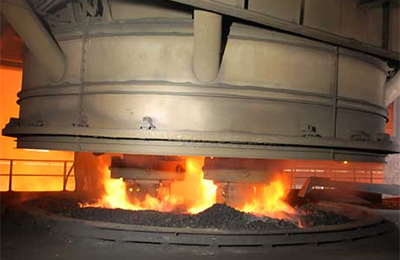Soderberg electrode paste is essential component of aluminum smelting
Aluminum, known for its lightweight and versatile properties, has become an essential component of modern industries. The process of extracting aluminum from its ore, bauxite, involves an energy-intensive technique called electrolysis. Electrode paste, particularly Soderberg electrode paste, has emerged as a critical innovation in advancing the aluminum smelting process.
Aluminum smelting involves the extraction of aluminum metal through the electrolytic reduction of alumina (aluminum oxide). The process takes place in a cell called an electrolytic reduction cell, typically consisting of a carbon-lined pot. During electrolysis, alumina is dissolved in a molten electrolyte, and a strong electric current is passed through the cell to induce the separation of aluminum metal from oxygen.
Electrodes are essential components of the aluminum smelting process, as they conduct the electrical current required for electrolysis. Soderberg electrodes, named after Swedish engineer Karl Soderberg, are widely used in modern aluminum smelting.
Soderberg electrode paste is a key advancement that has revolutionized the efficiency and sustainability of aluminum production.

Advantages of Soderberg Electrode Paste
Improved Efficiency: Soderberg electrode paste enhances the overall efficiency of the aluminum smelting process. Its composition and characteristics allow for a steady and controlled release of electrical current, leading to a consistent reduction of alumina and higher aluminum yield. This translates to reduced energy consumption and increased production output.
Reduced Environmental Impact: Traditional prebaked carbon electrodes release greenhouse gases like carbon dioxide during the baking process. Soderberg electrode paste eliminates the need for this energy-intensive baking step, resulting in lower carbon emissions and a smaller environmental footprint.
Extended Electrode Life: The paste’s unique properties extend the lifespan of Soderberg electrodes. The paste is continuously added to the cell, replenishing the electrode material as it is consumed during electrolysis. This self-baking characteristic reduces downtime for electrode replacement, leading to increased productivity and cost savings.
Flexibility and Adaptability: Soderberg electrode paste can be easily adjusted to suit specific operational requirements. Its composition can be modified to accommodate variations in raw materials, cell design, and process conditions. This adaptability contributes to the optimization of the aluminum smelting process.





